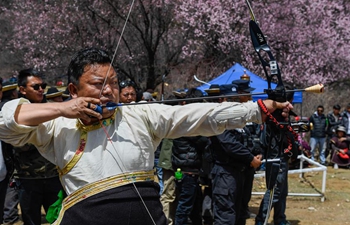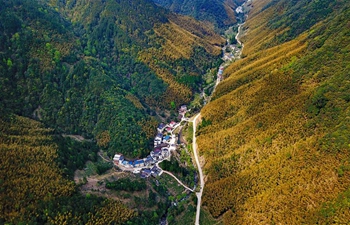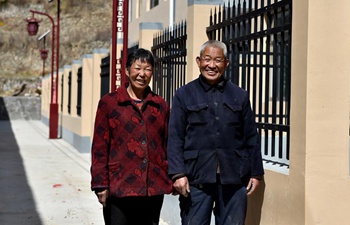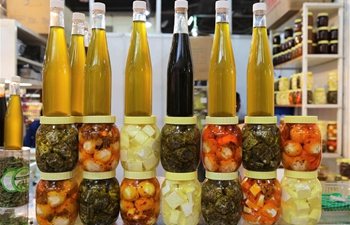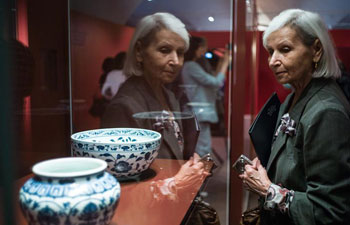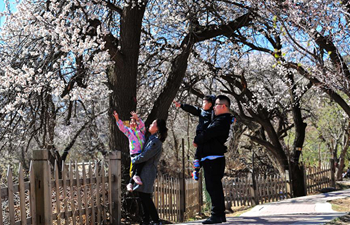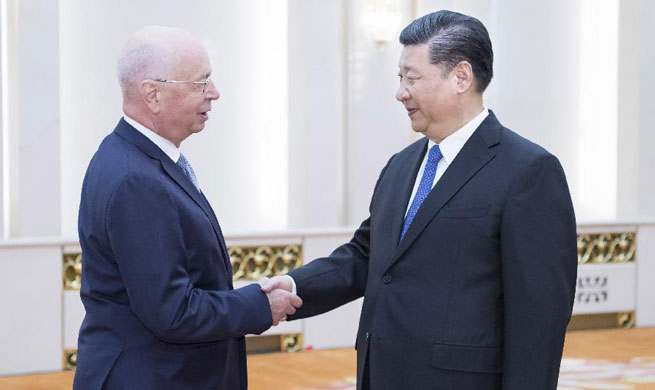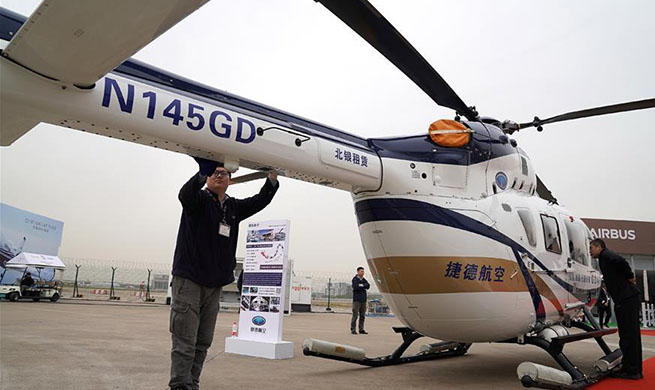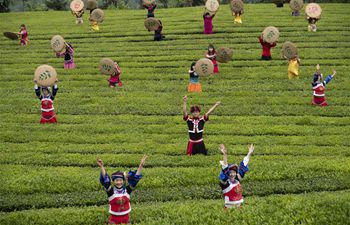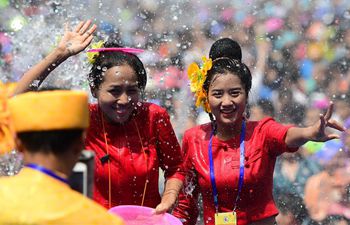LANZHOU, April 16 (Xinhua) -- At its peak, the silk carpet company in northwest China had 2,000 workers. Now the number is down to 60.
Making silk carpets had been a tradition in Tianshui City in northwest China's Gansu Province. The technique, which can't be replaced by machinery, is listed as a national heritage due to its artistic value and complexity.
Liu Jingbo, vice general manager of Xintian Silk Carpet Company, worries that fewer young people know how to make the carpets. Liu, 55, is also a nationally accredited tapestry technician.
In the 1990s, silk carpets were quite popular and the company mainly produced them for export to Japan, Germany and United States. Annual production totaled 9 million yuan (1.43 million U.S. dollars), said Liu.
"We had close to 500 full-time workers and had to hire as many as 2,000 when there were many orders," said Liu.
"Now it is difficult to hire. Young people do not like to sit there for eight hours a day. And it is difficult to sell. Sales are fewer than five million every year, and collecting payment is slow," he said.
Weaving a silk carpet takes a long time and is meticulous work, which contributes to its price of about 10,000 yuan for one square meter.
"It is quite taxing for the eyes and the body. It takes two skilled workers a year to complete a carpet which is two meters in height and four in length," he said.
Weaver Liu Xiaoying has worked at the company for 30 years. At 45 years old, she is still the youngest worker.
"To finish a line, which is less than one millimeter in thickness, it takes me a full hour," she said.
It is almost impossible to replace the handicraft with machinery, because silk is not as strong as wool.
"For simple patterns I could use machines, but then I have to use glue to stabilize the silk threads and it will decrease the quality of the piece. For exquisite pieces, it is impossible to use machines, because the silk threads can easily break," she said.
Strict environmental standards have also raised the cost.
"We used to dye the silk ourselves, but now we have to buy the finished silk threads, which has raised costs by 20 percent," said manager Liu.
Liu is eager to solve his company's dilemma. He is seeking help from designers and draws inspiration from luxury brands.
"A growing number of Chinese consumers are buying luxury products -- high-quality materials, intricate techniques and custom-made products that are non-necessities. I think silk carpets can find new life as modern luxuries," said Liu.
Now Liu and his colleagues make items printed with Buddhist figures or decorative art tapestries for companies.
"Silk tapestries carry the warmth of hands and have high emotional value. These traits, strengthened by artistic elements, could be strong selling points," said Liu Yang, a lecturer at Tianshui Normal College.
National funds have been allocated to promote and develop the techniques. Special labs have been established in the college. The Xintian company has received 700,000 yuan in funding since 2014 and favorable loan policies.
"We are trying to attract younger customers," said Wang Lizhen, a designer of silk tapestries.
"Personally I like palatial pieces, but young people may like simple and modernist designs. For example, silk tapestries could be used to make seat cushions in luxury cars," she said.
"Heritage cannot sit on the shelves. We are trying to bring it back to life," she said.




